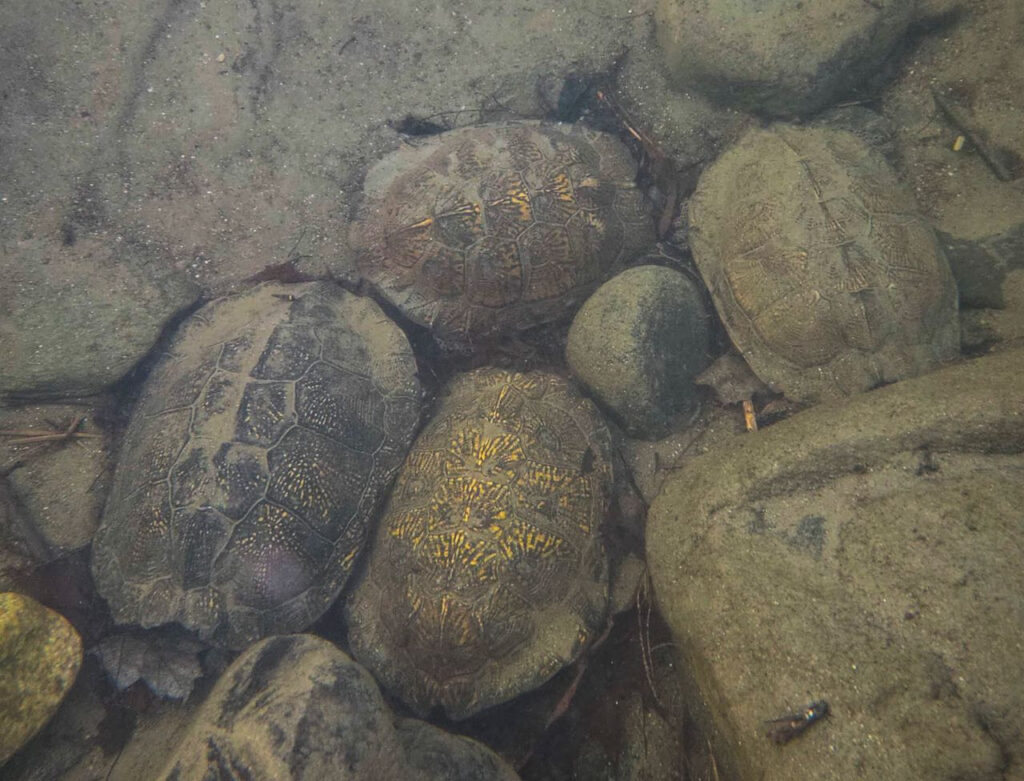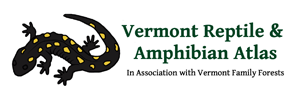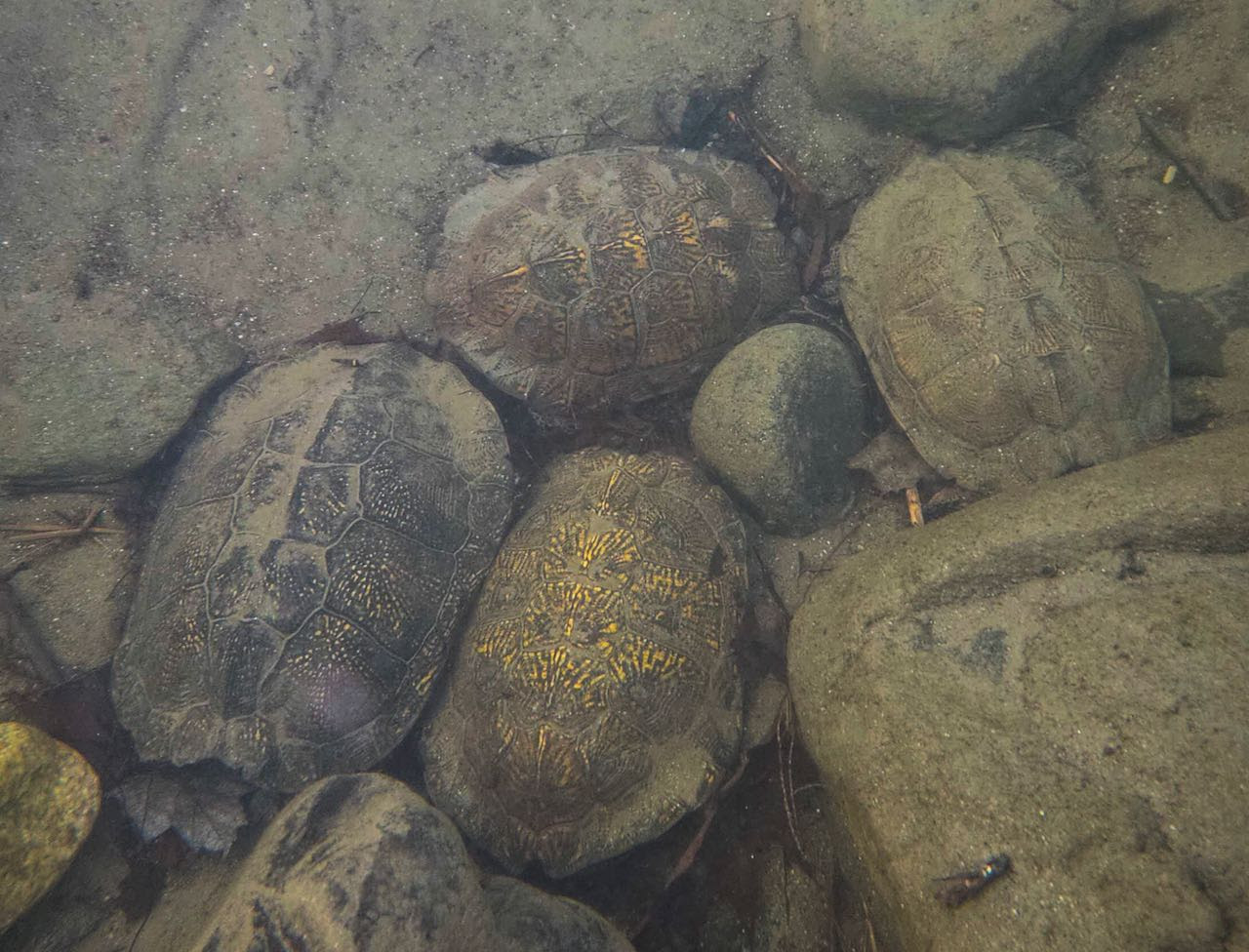
Herp Update: Annual Fundraiser Continues, New Maps Online, Recent Herp Activity – January 21, 2025
Our Annual Fundraiser Continues
Okay herpers, you are correct that we already surpassed our goal of $20,000 for our annual fundraiser. So far, 110 people have donated amounts ranging from $10 to $2,500 and totaling about $20,400. That said, we were planning to keep our GoFundMe page up until the end of January and we have a few young conservation herpetologists in need of paid work, so we raised our goal to $25,000. We will shut the GoFundMe page down at the end of the month, no matter how much we raise. Promise.
The WCAX (Channel 3) show “Across the Fence” invited us to visit their studio and talk about our Atlas and our fundraiser. When we were on the air we were interrupted with the breaking news of the Gaza cease fire but you can see the full 15 minutes on YouTube. If you have 15 minutes to check it out click here.
How to donate
If you donated already, thanks. If not, please consider a donation. Any amount is greatly appreciated.
Donations can be made in a few ways:
- Through our GoFundMe site (they take 2.9 percent of the payment plus 30 cents per transaction. They will ask for a tip, but that is optional).
- Via the PayPal button on our website (they take 2.9 percent of the payment plus 30 cents per transaction).
- By sending a check made out to James S. Andrews to: The Vermont Reptile and Amphibian Atlas, 642 Smead Road, Salisbury, VT 05769 (no overhead is lost).
- By sending a check made out to Vermont Family Forests to: The Vermont Reptile and Amphibian Atlas, 642 Smead Road, Salisbury, VT 05769.* Vermont Family Forests is our fiscal sponsor and they are a registered 501c3 non-profit (they take 15% for overhead costs).
*If your fund requires that a check must be sent directly to Vermont Family Forests (P.O. Box 254, 14 School Street, Suite 202A, Bristol, VT 05443), please notify them that your donation is for the Vermont Reptile and Amphibian Atlas and please also contact us directly about your donation.
**Checks should not be made out to the Vermont Reptile and Amphibian Atlas. We can’t cash them that way.
All Our Updated Distribution Maps are Now Online
We are pleased to have all of our updated maps now on our website. A few were corrected and one additional map was just updated and added. The new map is titled our “Effort Map” but it also shows the towns in Vermont with the greatest herptile diversity. The map at the bottom is our latest update. The map on the top was from 2011, so there are 13 years of additional data showing on the map on the right. The colors used in the map have changed, so that makes it harder to see the differences, but notice that the bottom two categories (red and yellow on the old map) showing towns with only 0-5 species and 6-10 species documented, have been dropped entirely. Our lowest category now is 11-15. We may never be able to drop the 11-15 category. We believe that all towns, cities, gores, and grants with diverse natural habitat left, should be able to support 15 species. That said, some of our cities may no longer contain appropriately diverse habitat to support that many species. Still, with your help, we should be able to move all the remaining yellow towns, gores, and grants into the green range (16-20 documented species).
Notice that no single town has all 40 of our known native species, but the towns with the greatest diversity are at the south ends of Lake Champlain and the Connecticut River. Those towns with the fewest species are either in the Northeast Kingdom, high-elevation mountain towns, or on a relatively flat island (Isle La Motte).
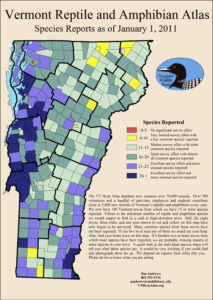
Boreal Chorus Frog
The two maps below show what we knew back in 2010 and what we know now about the distribution of Boreal Chorus Frogs. You will see that the maps have not changed. This is a species that was last heard by VT Fish and Wildlife biologist Mark Ferguson in 1999 in Alburgh. No one has seen or heard this species since then. It is very likely that our next maps will show all towns where it was once documented as historic. It has also disappeared from the Champlain Basin of NY State, and much of southern Quebec and eastern Ontario. It is still found further north and west in Canada though. We do not know why it disappeared. It could have been climate change, disease, drought, or perhaps a change in agricultural practices or chemical use.
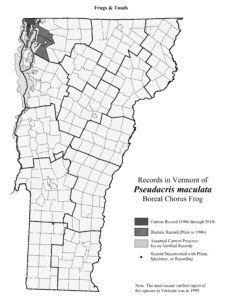
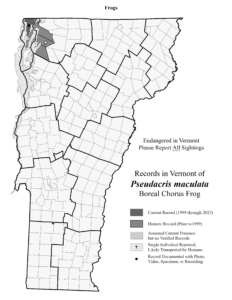
Common Watersnake
The two maps below show what we knew back in 2010 and what we know now about the distribution of what are now called Common Watersnakes (previously called Northern Watersnakes). This is clearly a species that is most concentrated in the lowlands of the Lake Champlain Basin but notice the new reports in Springfield and Weathersfield in Windsor County. These were a big surprise. Are they moving north up the Connecticut River? If so, shouldn’t they also be found in appropriate habitat in Rockingham, Westminster, Putney, and Dummerston? Notice also the newly discovered populations in southeastern Rutland County and Jamaica.

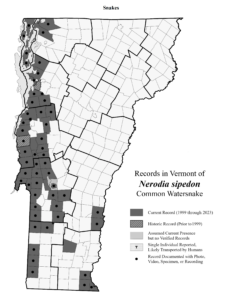
Recent Herp Activity
Kiley Briggs took this photo of four Wood Turtles overwintering on the bottom of a river on January 4. It was our first record of 2025. Putting this under the heading of “Recent Herp Activity” though is misleading. They can move, but they probably have not moved in weeks.
